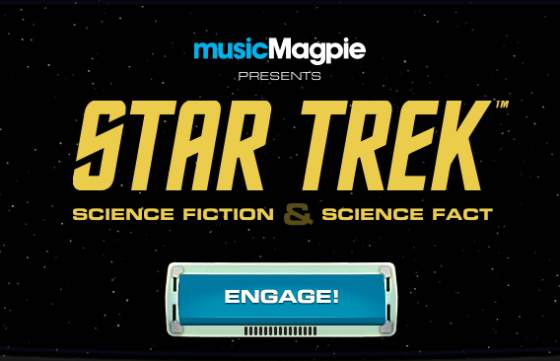 Join us as we boldly go where no man has before and beam up to three replica Enterprise bridges, carefully re-created using original Paramount Star Trek footage, screen stills and archive images. Once you've clicked 'Engage' you'll be able to beam your way to the Earth Space Dock from the Next Generation, to the Drydock from the Original Series or London, Earth in Alternate Reality.
Join us as we boldly go where no man has before and beam up to three replica Enterprise bridges, carefully re-created using original Paramount Star Trek footage, screen stills and archive images. Once you've clicked 'Engage' you'll be able to beam your way to the Earth Space Dock from the Next Generation, to the Drydock from the Original Series or London, Earth in Alternate Reality.
Join Music Magpie on this voyage of discovery by clicking here.
Once there, you'll be able to discover how many light years we are away from inventing real-world equivalents of the famous Star Trek technology! Explore how close we are to replicating La Forge's VISOR or Dr Leonard McCoy's favourite piece of medical kit. Compare how touch-screen computers of today match up to the Starship's Control Interface! Not only that, but it also features the original and iconic Star Trek sounds and images, so you'll soon feel part of Captain Kirk's crew!
